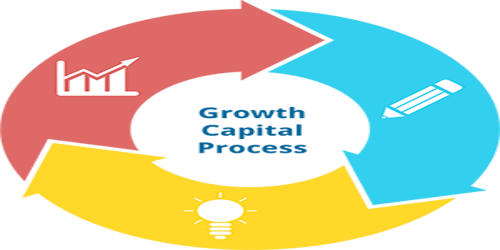Growth capital (also called growth equity) is a type of investment opportunity in relatively mature companies that are going through some transformational event in their lifecycle with the potential for some dramatic growth. It is a type of private equity investment, usually, a minority investment, in relatively mature companies that are looking for capital to expand or restructure operations, enter new markets or finance a significant acquisition without a change of control of the business. It is measured by the difference between the current value, or market value, of an asset or investment and its purchase price or the value of the asset or investment at the time it was acquired. It can be used to accelerate growth, fund acquisitions, or offer liquidity to current shareholders.
Companies that seek growth capital will often do so to finance a transformational event in their lifecycle. Growth Equity firms invest in well-run, growing businesses with proven business models, and solid management teams looking to continue driving the business. These companies are likely to be more mature than venture capital-funded companies, able to generate revenue and profit but unable to generate sufficient cash to fund major expansions, acquisitions, or other investments. An entrepreneur’s desire to take growth capital when they don’t “need to” sends a great signal to growth. Because of this lack of scale, these companies generally can find few alternative conduits to secure capital for growth, so access to growth equity can be critical to pursue necessary facility expansion, sales and marketing initiatives, equipment purchases, and new product development. Venture Capital investors assume significant market and product risk. In contrast, growth equity investors assume primarily execution and management risk.
Growth capital is placed on the gamut of private equity investing at the crossroads of venture capital and control buyouts. Growth capital can also be used to effect a restructuring of a company’s balance sheet, particularly to reduce the amount of leverage (or debt) the company has on its balance sheet. The investment objective varies among investors, depending on their level of risk tolerance. Investors with low-risk tolerance are likely to seek income, while investors with high-risk tolerance are likely to seek capital growth.
Growth capital is often structured as preferred equity, although certain investors will use various hybrid securities that include a contractual return (i.e., interest payments) in addition to an ownership interest in the company. It popularly known as expansion capital is capital provided to relatively mature companies that require money to expand or restructure operations or explore and enter new markets. Often, companies that seek growth capital investments are not good candidates to borrow additional debt, either because of the stability of the company’s earnings or because of their existing debt levels. So basically growth capital serves the purpose of facilitating target companies to accelerate growth.












